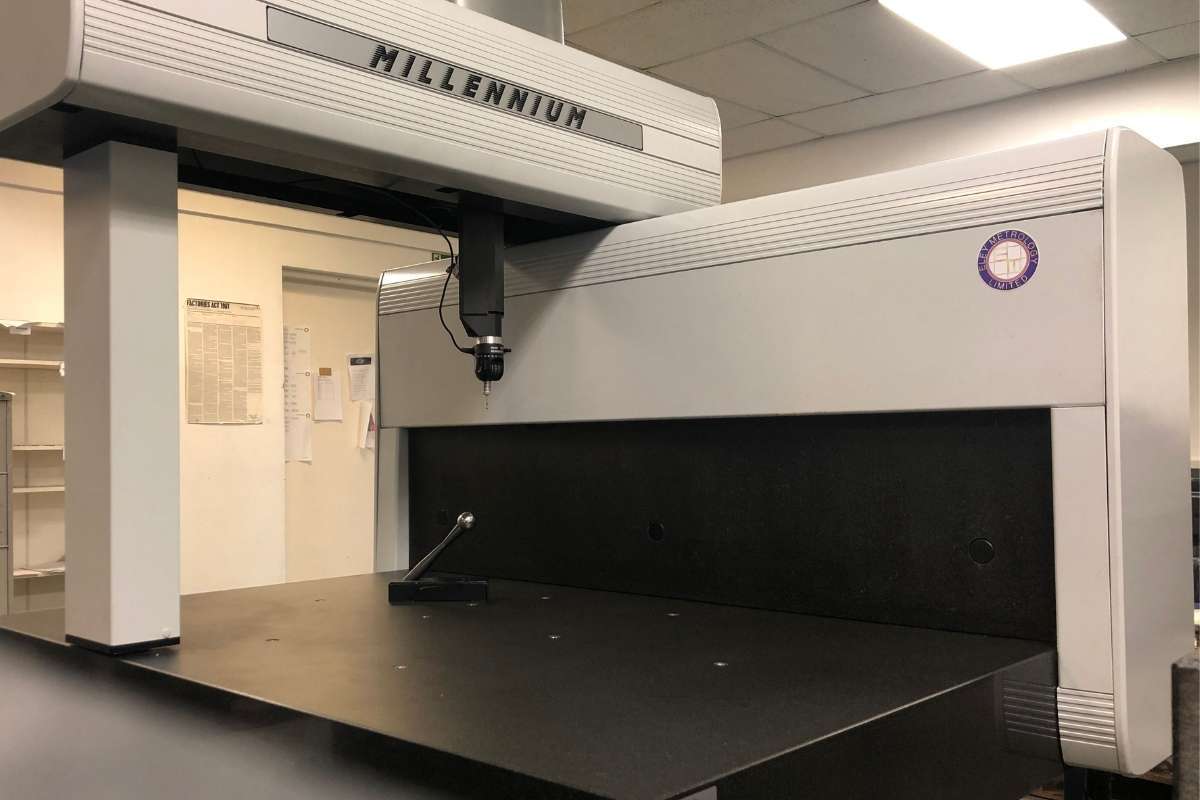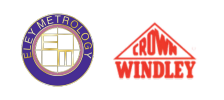Eley Metrology has been at the forefront of the CMM market in the UK for over 40 years. Over this time, our experts have been asked lots of questions about CMM’s, but the most common one is still ‘What is a CMM Machine’. If you’re new to the manufacturing industry or not directly involved in quality and inspection, then you may not know the vital role that CMM’s and metrology play. In this post, our team aim to provide a brief introduction to CMM’s and their essential work.

What is a CMM Machine?
A coordinate measuring machine or CMM is a device that is used to measure and inspect geometric qualities accurately. Using a CMM in their production process, manufacturers can ensure that objects and components are within the permitted tolerances of the design.
The history of the CMM can be traced back to 1631 and Pierre Vernier. Vernier was a French scientist, mathematician and engineer who invented a scale or measurement that enabled engineers to measure and manufacture more accurately than ever before.
His groundbreaking work is still used today and is the basis for all modern precisions measurement equipment such as the CMM.
What are the Types of CMM Machine
Coordinate measuring machines can be split into four distinct groups; bridge, cantilever, gantry and horizontal. All four types perform the same function but are designed to measure different types of item. Which CMM you choose will be based on what you plan to measure. All coordinate measuring machines have three orthogonal axes, X, Y and Z. These operate in a 3D coordinate system.
Bridge CMM’s – The workhorse of the CMM world. Bridge CMM’s have a fairly basic structure and are relatively cheap to build. They are typically used for measuring large, heavy items.
Cantilever CMM’s – Used to measure smaller parts, they are a popular choice as they provide open access around three sides. Cantilever CMMs are utilised primarily for measuring gauges and master parts.
Gantry CMMS’s – Gantry CMM’s are similar in appearance to Bridge CMM’s. However, they are typically a lot larger and used for measuring very large workpieces. Gantry CMM’s are used extensively in the aerospace industry due to the large scale of components they can measure and the high degree of accuracy they provide.
Horizontal Arm CMM’s – The least accurate CMM on the list, they are designed for measuring large, awkward shapes. They are most commonly used to measure large thin-walled/sheet metal type parts.
For a more in-depth look into each type of CMM, please read our post Types of Coordinate Measuring Machine.
What is a CMM Probe?
CMM’s use probes when measuring a component, and they one of the most important elements of a coordinate measuring machine. There are two types of probe used; the contact probe physically touches the item being measured. The non-contact probe use lasers or machine vision.
The contact probe is the most accurate of the two solutions, but non-contact probes are far quicker while still delivering extremely high accuracy levels.
Multi-sensor probes are available which use both types of technology. This gives the user more flexibility and means the CMM can be used for a wider range of applications.
For a more in-depth look into CMM probes, please read our post Coordinate Measuring Machine Probes.
What is a CMM Machine Summary
When it comes to CMM’s, there is a solution for every measuring problem. Whether you are looking for a highly accurate digital height gauge or need to measure down a long tubular item such as an engine shaft. CMM’s form an integral part of the modern manufacturing process, improving efficiency, decreasing wastage and reducing production costs.

Jeff Eley is the founder and managing director of Eley Metrology, a leading company in the precision measurement industry. With decades of experience in metrology, Jeff has established himself as a respected figure in the field. Under his leadership, Eley Metrology has become renowned for its expertise in coordinate measuring machines (CMMs), digital height gauges, and granite metrology products. Jeff’s vision has driven the company to develop innovative solutions, including custom-designed CMMs and the flagship long-bore measurement machine (LBM). His commitment to excellence and customer-centric approach has positioned Eley Metrology as a trusted provider of high-precision measurement tools and services for industries such as aerospace, automotive, and manufacturing.


